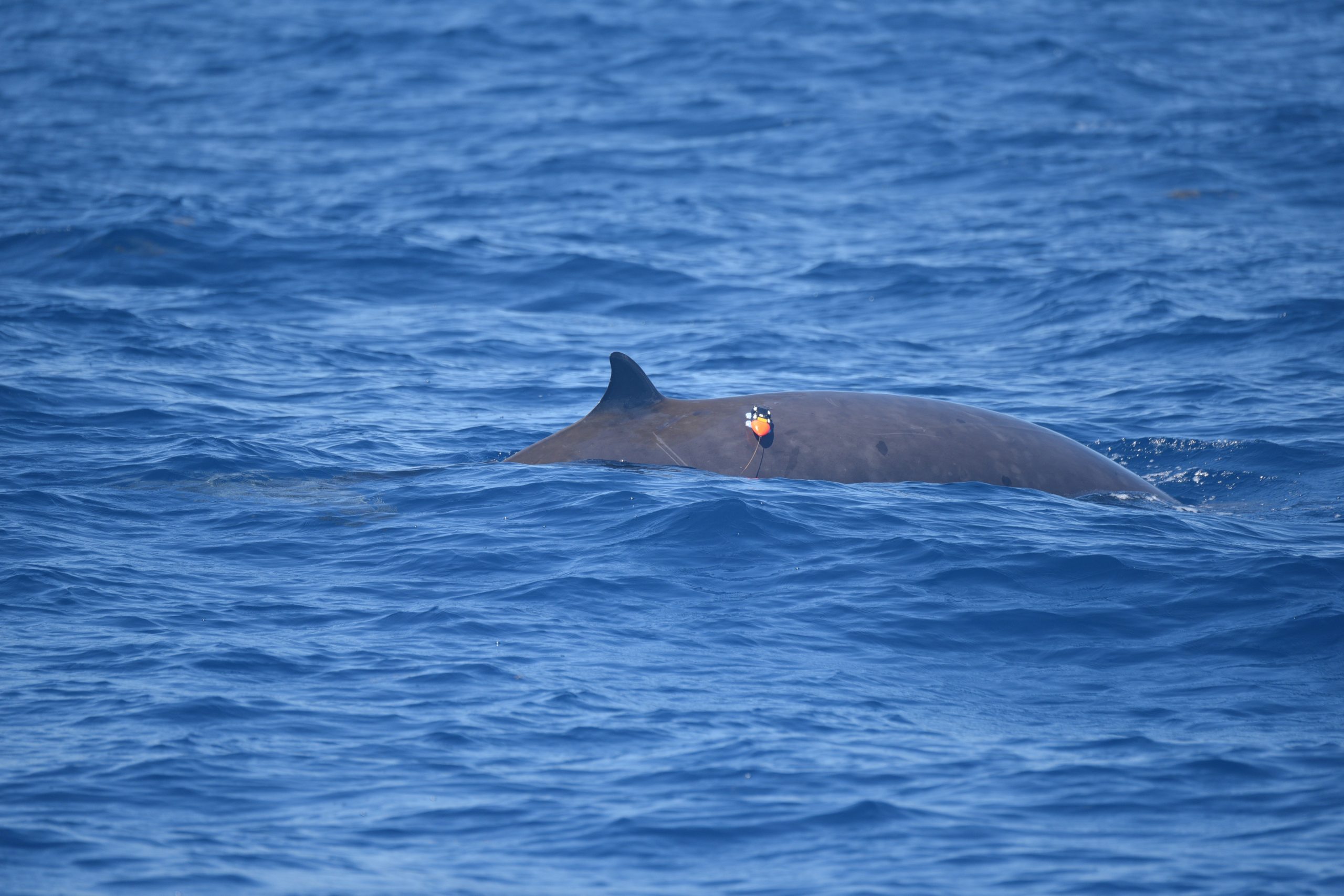We’re now almost half-way through our spring field season – we’ve been busy working off Cape Hatteras for the past two weeks. We have deployed six satellite-linked transmitters on pilot whales and one more on a pelagic bottlenose dolphin. Two of the tags we have deployed on pilot whales also transmit data on dive duration and depth.

On Monday we also deployed our first Digital Acoustic Tag of the field season on a pilot whale. These tags record depth, orientation and acceleration using a suite of sensors as well as a record of the acoustic environment of the tagged whale. The tags sample the orientation of the animal in three dimensions with sufficient resolution to capture individual fluke strokes. We program the tags to release from the animal at a pre-determined time by venting the suction cups (this works most of the time). A VHF transmitter embedded in the tag helps us to track the whale and to recover the device. Once the tag is jettisoned from the whale and recovered, we download data from the tag to a computer.

We attached the tag to a whale that we found in a large aggregation that contained several of our satellite-tagged animals. We followed it for six hours from our small Rigid-Hulled Inflatable Boat, the Exocetus. We kept track of the composition of the group of the tagged whale – it was initially in a pretty tight group of 17, but peeled off from this group with four other whales for a couple of hours before rejoining the original group in another large feeding aggregation. It’s always interesting to peer into the lives of these animals for a few hours. We successfully recovered the tag at about 5:30 and were back on shore by 8:00 PM.

As always, it’s been a bit of a struggle to deal with the weather 40 miles from shore – we’ve turned around twice this week when sea conditions turned out to be worse than forecast. But it’s always worth it when we manage to get offshore – on Monday we were also treated to sightings of two South Polar Skuas, a flock of phalaropes and a ton of scalloped hammerheads in and amongst the pilot whales.



